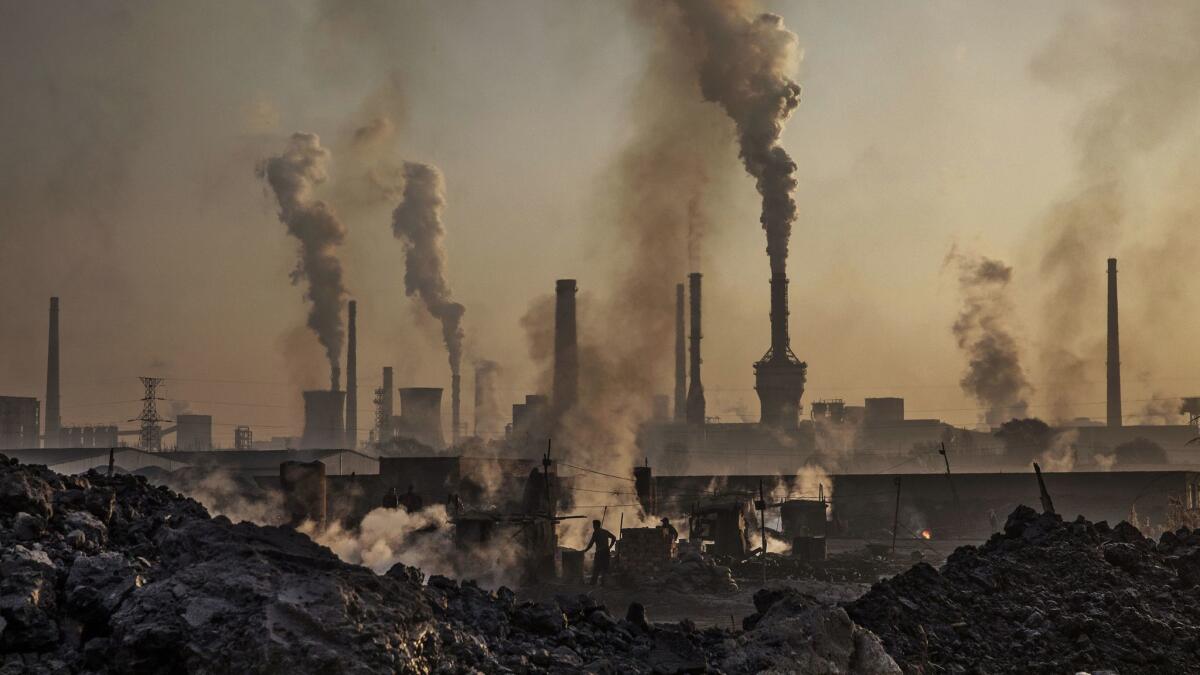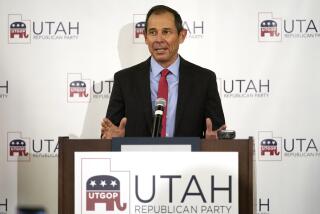Opinion: Solving the climate crisis, one hospital at a time

With early optimism surrounding the 2015 Paris agreement on climate change now fading into anxiety over potential changes to U.S. environmental policy under a Trump administration, many are looking for new leaders in the fight against global warming. Hospitals should step into the breach. Doing so could both slow climate change and improve healthcare systems globally.
Leadership on major world problems is not new to the health sector, which is already confronting intractable global challenges such as HIV/AIDS, Ebola and Zika.
The 2015 report of the Lancet Climate Change Commission called climate change the “biggest global health opportunity of the 21st century,” because of the potential to improve both the health of the planet and individuals by taking steps such as reducing air pollution. The authors optimistically noted that if the public health community can fight Big Tobacco or infectious outbreaks, it can tackle climate change, too.
The health sector’s role in addressing climate change goes beyond advocacy and research. It can spearhead real change by transforming global healthcare delivery by rethinking how hospitals and other health facilities are run. By taking action now, hospitals can demonstrate to others how to “kick the coal habit.”
For instance, the nonprofit Health Care Without Harm has the “Global Green and Healthy Hospitals” program, which laid out a comprehensive strategy for transforming hospitals and healthcare facilities to not just promote health, but also protect the environment. One of the program’s 10 goals is energy transformation, urging hospitals to implement energy efficiency measures and adopt clean, renewable energy generation.
To date, the program has nearly 700 members from 40 countries representing more than 20,000 hospitals and health centers. Some are already showing the way forward.
For example, Gundersen Health System, a network of hospitals based in Wisconsin, is the first fully energy-independent health system in the United States. It produces its own energy from renewable energy sources such as solar, biomass and wind, and pairs that with energy efficiency measures and sustainable building design.
In Asia, the network of hospitals owned by the Buddhist Tzu Chi Medical Foundation in Taiwan, as well as Severance Hospital in South Korea, have also been practicing energy efficiency measures and tracking their greenhouse gas emissions for years.
However, smaller hospitals will need help adopting clean energy technologies. I’m a doctor and in my conversations with hospital owners in my home country, the Philippines, I learned that they usually do not have the capital to pay the upfront costs of installing solar panels. Most do not even have access to technical know-how or solar panel distributors. This is the case for many hospitals in the developing world.
Given this challenge, why should investing in renewable energy in the health sector be a priority?
First, they can help to dramatically reduce the health sector’s carbon footprint. In the United States alone, 8% of greenhouse gas emissions come from the health sector. Hospitals in Brazil account for nearly 11% of the country’s total commercial energy consumption. Global health organizations such as the World Medical Assn. and the World Federation of Public Health Associations have called for fossil fuel divestment not just by the commercial sector, but also by the health sector. Shifting to renewable energy to power hospitals is one way to do this.

The second reason is that healthcare today almost always requires access to electricity, from standard diagnostic devices such as X-ray machines and ultrasound to mobile phones used by community health workers for app-based patient monitoring and disease surveillance. The need to power hospitals and health facilities is vital to improving the quality of care these facilities can provide.
Global health planners often think of the need for health workers, medicines and buildings, but overlook the electricity that is essential to keep everyone moving. For example, according to a 2013 World Health Organization report, 26% of health facilities in sub-Saharan Africa had no access to electricity and only 28% had reliable electricity. If we are truly committed to improving child and maternal health in these impoverished regions, we must ensure that there is a working refrigerator to keep the vaccines cold and functioning lamps to deliver babies at night. There can be no universal health coverage without universal access to energy.
Locally-supplied clean energy could also help ensure that hospitals and healthcare facilities have ready access to electricity in times of calamity. For example, when Typhoon Haiyan struck the Philippines in 2013, it was considered the strongest typhoon ever to hit land. The destruction of the power grid left 300 towns and millions of residents without electricity. Three months after the typhoon, more than 75% of the buildings remained disconnected from the grid, including small hospitals and health facilities.

Beyond declarations and journal papers, the global health community has already started to monitor its actions. Just recently, the Lancet launched a countdown, laying out a dashboard of indicators for tracking progress on climate and health until 2030. Two of the proposed indicators measure energy access for health facilities and the greenhouse gas emissions of healthcare systems.
The Lancet called climate change the biggest global health threat of the 21st century. To be sure, there are other chronic health problems, particularly in developing countries, that demand urgent attention. But investing in renewables within the health sector isn’t a competing interest. Doing so will ensure that hospitals and health facilities do not contribute to health-damaging environmental pollution that, in turn, adds further burden to already weak health systems. Furthermore, solar- or wind-powered hospitals could remain operational 24/7 when the next Ebola or Typhoon Haiyan strikes.
To heal more patients, the health sector must start healing the planet. Making hospitals low-carbon and climate-resilient in the face of extreme weather by using renewable energy is the sort of leadership that would keep progress moving in an effort to improve health and reduce climate change. Hospitals could start on this today.
Renzo Guinto (@RenzoGuinto) is a Filipino physician and a doctoral student at the Harvard T.H. Chan School of Public Health. He is also a researcher at the Harvard Center for Health and the Global Environment, member of the International advisory board of the Lancet Planetary Health, and 2016 New Voices Fellow at the Aspen Institute.
More to Read
Start your day right
Sign up for Essential California for news, features and recommendations from the L.A. Times and beyond in your inbox six days a week.
You may occasionally receive promotional content from the Los Angeles Times.






